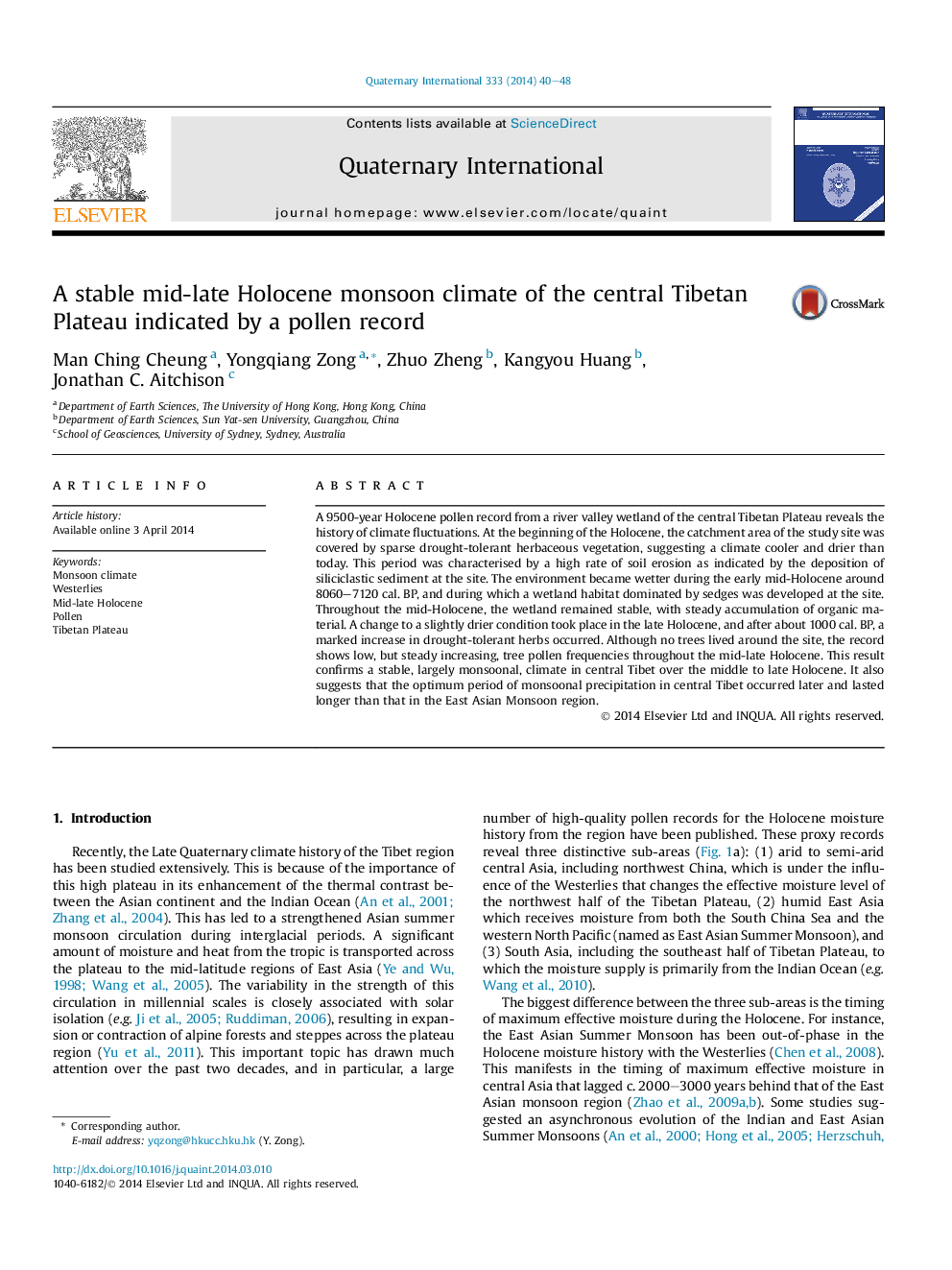| Article ID | Journal | Published Year | Pages | File Type |
|---|---|---|---|---|
| 1041584 | Quaternary International | 2014 | 9 Pages |
A 9500-year Holocene pollen record from a river valley wetland of the central Tibetan Plateau reveals the history of climate fluctuations. At the beginning of the Holocene, the catchment area of the study site was covered by sparse drought-tolerant herbaceous vegetation, suggesting a climate cooler and drier than today. This period was characterised by a high rate of soil erosion as indicated by the deposition of siliciclastic sediment at the site. The environment became wetter during the early mid-Holocene around 8060–7120 cal. BP, and during which a wetland habitat dominated by sedges was developed at the site. Throughout the mid-Holocene, the wetland remained stable, with steady accumulation of organic material. A change to a slightly drier condition took place in the late Holocene, and after about 1000 cal. BP, a marked increase in drought-tolerant herbs occurred. Although no trees lived around the site, the record shows low, but steady increasing, tree pollen frequencies throughout the mid-late Holocene. This result confirms a stable, largely monsoonal, climate in central Tibet over the middle to late Holocene. It also suggests that the optimum period of monsoonal precipitation in central Tibet occurred later and lasted longer than that in the East Asian Monsoon region.
